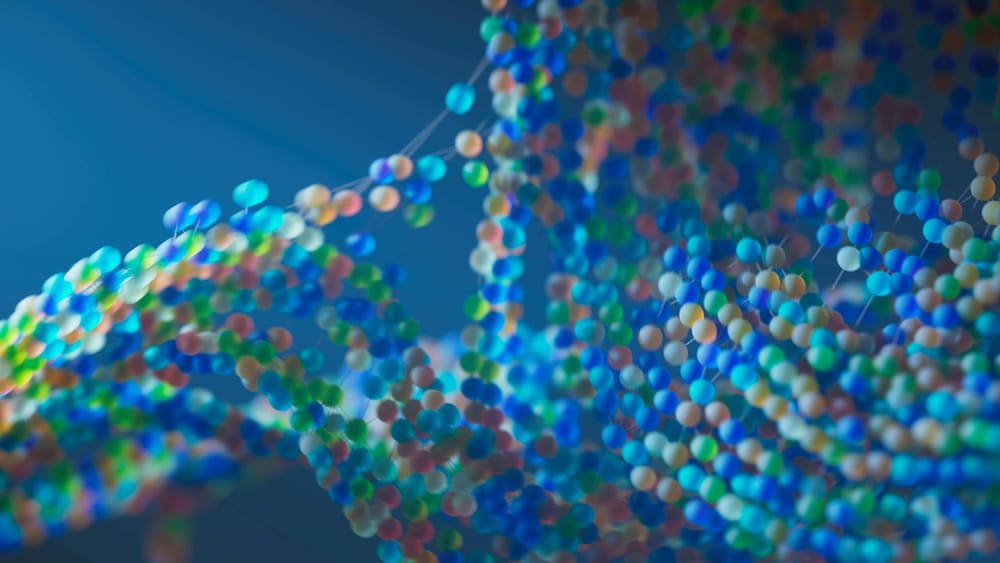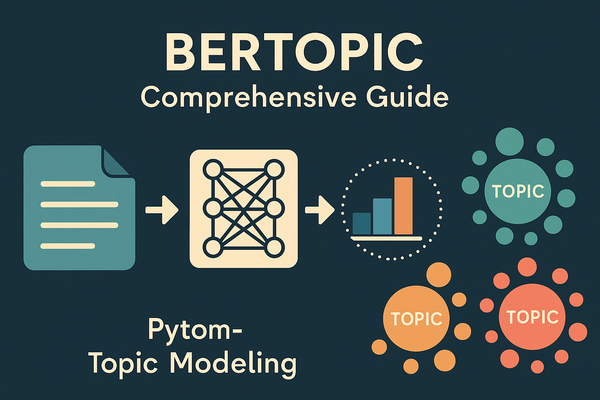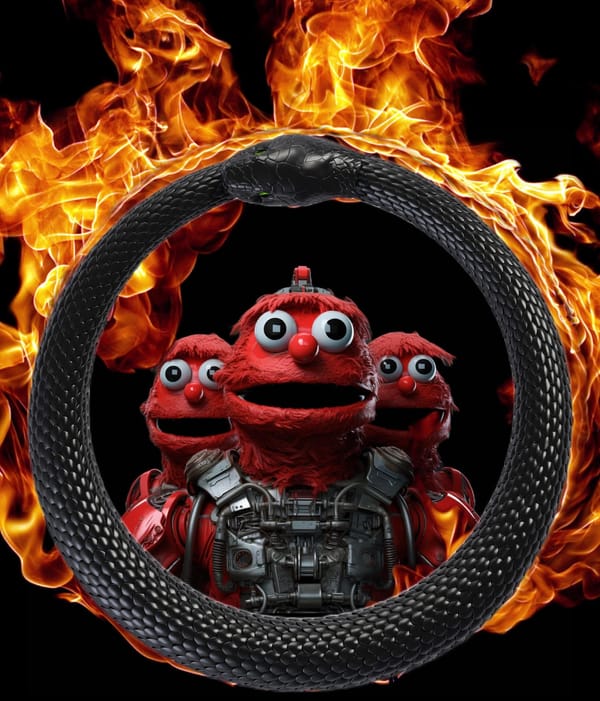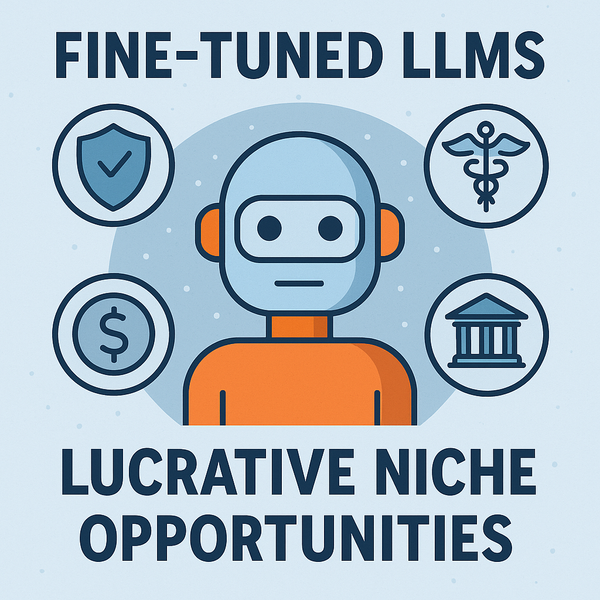AI and Small-Molecule Chemistry: Student Opportunities
Explore how AI is transforming small-molecule chemistry, making advanced tools accessible to students and researchers. From RDKit to GPT-4, this evolving field opens doors to innovation in drug discovery and beyond. Discover key opportunities, tools, and concepts in this AI-powered frontier.

This post is part of our Deep Research series—crafted using ChatGPT to synthesize insights from across industries where human labor is a bottleneck. Through rigorous exploration and synthesis, we deliver broad-based survey articles that uncover uniquely valuable perspectives only possible with this depth of research.
Introduction: The Fusion of AI and Cheminformatics
Artificial intelligence is rapidly reshaping the landscape of chemistry. From accelerating drug discovery to designing new materials and optimizing reactions, AI has become a critical skill area for chemists in both academia and industrygarlic-groundhog-fcpn.squarespace.com. The exciting part is that even students and newcomers can get involved – you don’t need a PhD or expensive software licenses to begin exploring AI-driven chemistrygarlic-groundhog-fcpn.squarespace.com. This convergence of small-molecule chemistry with data science and machine learning (often called cheminformatics) offers myriad opportunities to create educational content, tools, and communities.
In this guide, we focus on opportunities beyond traditional drug discovery – emphasizing what an engineer or data scientist can do to empower chemistry and pharma students. We’ll look at fundamental tools like RDKit and molecular fingerprints, AI applications like property prediction and toxicity assessment, and new frontiers where large language models (LLMs) like GPT-4 (e.g. via ChemCrow) assist in chemical tasks. Our goal is to highlight under-served topics and practical projects that can expand students’ mindsets in this AI-enabled era of chemistry.
🔬🎧 Listen: AI and Small-Molecule Chemistry for Students
Dive into a compelling audio summary exploring how AI is revolutionizing small-molecule chemistry—from drug discovery to molecular property prediction.
Learn how tools like RDKit, SMILES, and GPT-4 are making cheminformatics more accessible, and discover how students can get involved in tool-building, safety, and community-driven research.
▶️ Listen to the PodcastCheminformatics Fundamentals: SMILES, Fingerprints, and RDKit
Any journey into AI + chemistry should begin with the basics of cheminformatics. Key concepts include SMILES (Simplified Molecular Input Line Entry System) strings – compact text codes for molecules – and molecular fingerprints – numerical vectors (often bits) encoding molecular features for comparison. Mastering these representations allows one to computationally search and analyze molecules at scale. For example, a SMILES string acts like a “barcode” for a molecule’s structurechemcopilot.com, and fingerprints (like the Morgan or RDKit fingerprint) allow fast similarity calculations between compoundschemcopilot.com.
RDKit is the go-to open-source toolkit that makes working with such representations accessible. With RDKit in Python, students can convert a molecule’s name or SMILES into a chemical object, visualize structures, compute properties (molecular weight, logP, etc.), and generate fingerprints in just a few lines of codechemcopilot.comchemcopilot.com. RDKit is widely used in industry and academia – pharmaceutical companies, research labs, and startups rely on it as a powerful, license-free alternative to expensive cheminformatics softwarechemcopilot.com. This means when students learn RDKit, they’re picking up industry-relevant skills using professional-grade toolschemcopilot.com.
Opportunities in Fundamentals: There is a need for beginner-friendly content that demystifies these building blocks. You might create tutorials like “Introduction to SMILES and Molecular Fingerprints” with hands-on RDKit examples. Such content could explain, for instance, how to generate a molecule from a SMILES and compute a fingerprint, then use the Tanimoto similarity metric to compare moleculeschemcopilot.com. Another idea is a tutorial on “Visualizing and Cleaning Molecules with RDKit,” covering tasks like drawing structures and standardizing molecules (removing salts, normalizing functional groups) – essential steps in data preprocessingchemcopilot.com. These fundamentals underpin many advanced applications, so solid educational resources here will empower students to tackle more complex projects later. (Notably, the RDKit community is active and growing, which means students can also join forums or Discord channels for helpchemcopilot.com.) By mastering the basics, learners gain a digital chemistry lab where they can analyze thousands of molecules in seconds and prepare datasets for AI modelingchemcopilot.com.
Machine Learning for Molecular Properties (Beyond Drug Discovery)
Once comfortable with representing molecules, students can explore machine learning (ML) techniques to predict molecular properties and activities. This goes far beyond searching for new drugs – it includes any scenario where we have data on molecules and some measured outcome. For example: predicting toxicity, environmental impact, solubility, metabolic stability, or materials properties of small molecules. In fact, toxicity prediction is a prime example that underscores the broad importance of ML in chemistry: toxicity is crucial not only in drug development but also in environmental and public health contextsmedium.com. Reducing toxic exposures and replacing animal testing are grand challenges where computational models can helpmedium.com. Recent years have seen heavy research into using machine learning (including deep learning) to classify compounds as toxic or non-toxic based on their structuremedium.com – showing how powerful molecular fingerprints and descriptors can be when combined with AI.
For students, there are rich learning opportunities here. They could start with classical QSAR (Quantitative Structure–Activity Relationship) modeling: using RDKit to compute molecular descriptors or fingerprints, then training a model (say a random forest or neural network) to predict a property. This teaches not only chemistry knowledge (which molecular features might influence the property?) but also general AI skills (data preprocessing, model training, evaluation). For instance, a great beginner project is to predict aqueous solubility of molecules: using a dataset like ESOL (a public set of compounds with solubility values) and extracting RDKit features to feed a machine learning modelgarlic-groundhog-fcpn.squarespace.comgarlic-groundhog-fcpn.squarespace.com. Another project could be a toxicology classifier using the Tox21 dataset (a NIH toxicity dataset) – possibly focusing on one of its assays to keep scope manageable. Through such projects, students learn how to handle class imbalance, interpret model performance, and appreciate why some molecules are toxic or not.
Importantly, these exercises don’t require big pharma resources. Using open data and free tools, one can get meaningful results. For example, one Medium project demonstrated a full pipeline where RDKit descriptors plus modest machine learning techniques (like random forests and ensemble models) achieved competitive toxicity predictions, and even deployed the model via a simple web app for others to trymedium.commedium.com. This shows that even “classical” models with domain-informed features can perform well on complex problemsmedium.com – making the field accessible to those without supercomputers.
Opportunities in ML Content: There is a lot of untapped potential in teaching molecular ML to newcomers. You could develop a tutorial or blog series like “Machine Learning 101 for Chemists” that walks through a real dataset analysis: from reading a SDF/CSV of molecules, through computing descriptors in Python, to training a predictive model and assessing it. The under-served niche here is content that doesn’t assume the reader is already a machine learning expert. For example, explaining what a ROC-AUC means in a toxicity model, or how Lipinski's Rule-of-5 (a simple heuristic for drug-likeness) could be turned into a feature engineering exercise. Specific tutorial ideas: “Building a Solubility Predictor with RDKit and Scikit-Learn,” “Analyzing Molecule Toxicity with Machine Learning (a Tox21 case study),” or “Predicting Drug-Like Properties (LogP, PSA, etc.) using RDKit descriptors.” Each of these would fill a gap by showing end-to-end workflows. They also naturally tie into industry use-cases – for instance, pharma companies routinely build models to filter out drug candidates with poor properties early on. By learning these skills, students see how AI assists in decision-making for chemistry. (In industry, having data engineering know-how – like cleaning chemical datasets or automating model training – is highly valued, so highlighting those aspects in content is wise.) Moreover, introducing students to open-source libraries like DeepChem can be valuable: DeepChem provides ready-made models and datasets (e.g. MoleculeNet benchmark datasets) that students can experiment withgarlic-groundhog-fcpn.squarespace.com. A tutorial on DeepChem usage or comparing it with raw RDKit+scikit approaches could be very enlightening.
Finally, it’s worth mentioning generative models as an advanced topic. Beyond predicting properties of existing molecules, AI can generate new molecular structures. This is the idea behind AI-driven molecular design (e.g. using variational autoencoders, GANs, or even GPT-style models to propose new SMILES). While we won’t focus on drug discovery per se, this generative angle can be framed as a fun exploration: for example, an article on “Using AI to Invent New Molecules – Hype vs Reality” or a tutorial like “Generating Novel Molecules with a Chemistry GPT”. One could demonstrate using a public tool or API (even OpenAI’s GPT-4 via their API) to suggest new SMILES strings and then use RDKit to validate and analyze those suggestions. In fact, one suggested student project is to use GPT-4 to generate novel drug-like molecules and then filter them by drug-likeness rules or toxicity predictionsgarlic-groundhog-fcpn.squarespace.com – a great way to illustrate how human expertise (filtering criteria) and AI creativity can combine. Such content would be quite novel and inspiring for students, as it strays from textbook chemistry into the creative realm, all while teaching them to critically evaluate AI outputs (many AI-generated molecules might be nonsensical or unsynthesizable, which is a learning point in itself).
Leveraging LLMs as Chemistry Assistants (ChemCrow, ChatGPT & More)
A recent and exciting opportunity lies in large language models (LLMs) – like OpenAI’s GPT-4 or other chatbots – which can act as intelligent assistants for chemists and students. For example, ChatGPT has been augmented with the ability to use RDKit under the hood, meaning it can now directly manipulate and visualize molecules when askedethanbholland.com. In practical terms, this means a student could ask an AI assistant to “calculate the molecular weight of aspirin and draw its structure,” and the LLM will leverage RDKit to produce the answer with the structure image. This development is brand-new (OpenAI integrated RDKit tools in 2025) and underscores how AI can lower the barrier for doing cheminformatics – even without writing code, users can engage in complex chemical analysis via natural language promptsethanbholland.com.
Beyond direct use of ChatGPT, specialized projects like ChemCrow are exploring how LLMs can be combined with a suite of chemistry tools to solve multifaceted problems. ChemCrow, introduced in 2023, is an open-source “chemistry agent” that uses GPT-4 alongside 18 expert-designed toolsinsilicochemistry.ioinsilicochemistry.io. These tools include functionalities for molecule lookup, property calculation, similarity search, reaction prediction, etc., many powered by libraries like RDKit or access to chemical databasesinsilicochemistry.ioinsilicochemistry.io. For example, ChemCrow can take a natural language task (like “Suggest a synthesis route for molecule X”) and internally decide to call a reaction prediction tool or a similarity search as needed, iterating in a reasoning loopinsilicochemistry.ioinsilicochemistry.io. This is cutting-edge stuff at the intersection of AI and chemistry research. While undergraduates don’t need to dive into building their own ChemCrow from scratch, the concepts it embodies present great educational content opportunities: you could write an article introducing ChemCrow and what it implies for the future of chemical research, or even do a simple demo of an LLM using a chemistry tool (for instance, using an open-source LLM with a plugin that calls RDKit for a task).
Opportunities with LLM Content: To expand students’ mindsets, it’s important to highlight how LLMs can assist (and where their limitations are). One idea is a tutorial like “Using ChatGPT to Write RDKit Scripts” – showing how an LLM can generate Python code for a given chemistry task (and stressing the need to double-check the code’s correctness!). This can be very empowering for students who are new to programming: an LLM can act as a coding tutor, suggesting how to implement, say, a substructure search or how to parse a SDF file, which the student can then test and refine. Another engaging piece could be “We Tried a Chemistry AI Agent, Here’s What Happened”, where you document an experiment of giving a complex problem to an LLM (with or without tools) and analyze its solution. For example, you might prompt an LLM integrated with RDKit to design a molecule with certain properties, then discuss the results. Citing real systems: ChemCrow’s creators showed it accomplishing tasks in drug discovery and materials design by combining reasoning with tool usageinsilicochemistry.io. You could simplify that narrative for a student audience: explain how the AI reasons (“thought” steps) and when it chooses to use a tool like a molecule similarity calculator or a molecular weight function (ChemCrow’s SMILES2Weight tool uses RDKit to get molecular weightinsilicochemistry.io).
This area is quite fresh, so content here would definitely be under-served – very few educational blogs or courses cover how to use LLMs in chemistry. Even a straightforward guide on, say, setting up an environment where students can chat with an AI that has chem knowledge, or a comparison of various chemistry chatbots (some companies and communities are releasing ChatGPT-like models fine-tuned for chemistry), would gather interest. The key is to keep it practical and honest: LLMs can accelerate learning (rapid answers, code generation) and augment research, but they are not infallible. Illustrating both the power and the pitfalls (e.g. an LLM confidently giving a wrong structure or an unsafe synthetic route) will make for compelling and valuable content. By learning to work with AI, students transform from passive learners into AI-empowered problem solvers – a mindset shift that is exactly what we want to encourage.
Building Tools and Platforms: From Code to Interactive Apps
Another avenue for both learning and creating value is developing user-friendly tools in the chemistry AI space. Many chem/pharma students lack extensive programming experience, so tools with simple interfaces can greatly broaden access. As an engineer, you could build or showcase platforms that wrap powerful libraries like RDKit in a more accessible form. One example is creating a web application (using frameworks like Streamlit or Flask) for common tasks – for instance, a “Molecule Property Explorer” where a user draws or inputs a molecule and the app returns predicted properties, similarity search results, etc. In fact, in one recent project a researcher deployed a toxicity prediction model via a lightweight Streamlit app, allowing users to easily get toxicity predictions for any compound they inputmedium.com. This kind of tool transforms code and models into interactive learning experiences.
Open-source wrappers are also valuable. We already see projects like Datamol, which is a Python library built on RDKit to provide a simpler, more streamlined API for molecular operationsdocs.datamol.io. Datamol keeps everything as RDKit molecules under the hood but offers convenient functions with sensible defaults (and even built-in parallelization for speed)docs.datamol.io. Introducing such tools to students via tutorials can help lower the learning curve – for example, a guide on “Simplifying Cheminformatics with Datamol” could show how tasks that take many lines in pure RDKit might be done in one or two lines with Datamol. This not only teaches the task but also the importance of developer ergonomics and open-source contributions. You could even inspire students to contribute to these projects or build their own mini-libraries. For instance, a motivated student might create a simple RDKit plugin for visualization or a script to automate dataset cleaning, and sharing these as open source would benefit the community.
Consider also visualization and database tools. Chemistry data often needs visual intuition – scatter plots of chemical space, interactive 2D structure viewers, etc. Tools like ChemPlot have emerged to plot chemical space in 2D for large datasetschemistry-europe.onlinelibrary.wiley.com, and RDKit itself can generate coordinates to visualize molecules in 2D or 3D. A blog post that guides students through visualizing a chemical dataset (perhaps using PCA or t-SNE on fingerprint vectors to see clustering of similar molecules) would fill a niche between pure coding and chemistry insight. It teaches data visualization skills and reinforces the concept of molecular similarity in a visual way.
On the database side, an underserved topic is how to search and manage chemical data. You could cover how to perform substructure searches or similarity searches on a collection of molecules – effectively building a mini “molecule search engine.” Given your own site’s name (moleculesearch.ai), this could be a signature project. A tutorial or tool demonstrating substructure search (finding molecules that contain a certain scaffold) using RDKit’s substructure queries, or a similarity search that indexes fingerprints for thousands of molecules and finds nearest neighbors, would be highly educational. It combines algorithmic thinking (how to optimize search), chemical knowledge (why substructures matter), and coding. While big companies have proprietary systems for chemical search, an open demo on a small scale would be novel content for students. It also connects to real-world applications: pharma researchers regularly do similarity searches to find analogs of a lead compoundmedium.commedium.com, and learning how this works “under the hood” demystifies a core computational task in drug and materials research.
Opportunities in Tool-Building Content: To summarize, you can create content that not only tells about tools but actually provides tools or guides to building them. This might include:
- “How to Build a Molecule Web App in 1 Day” – teaching basics of using Streamlit or Gradio with RDKit to make a functional web tool (for example, an app that lets users draw a molecule and then computes properties and displays similar molecules from a preset database).
- “Creating a Custom Molecular Database and Search” – walking through using RDKit to store molecules (maybe in a simple SQLite with BLOBs or just in memory) and perform queries, highlighting concepts of indexes or fingerprint similarity thresholds.
- “Enhancing RDKit with Utility Libraries” – highlighting Datamol and perhaps other libraries (DeepChem for models, Open Babel for file conversion, etc.), showing how they integrate with RDKit to make life easier.
- Case studies of industry workflows – e.g. an article outlining how a pharma company might use an RDKit pipeline to filter compounds (so students see the direct connection to jobs). You can cite that RDKit is already known to handle many drug discovery data tasks like filtering by properties or removing undesirable substructures, which is why it's used in those companieschemcopilot.comchemcopilot.com.
By developing and sharing such tools and guides openly (e.g. via GitHub), you not only create engaging content but also foster a community. Students and researchers could use your tools, give feedback, and contribute improvements. This leads naturally into community-building, which can amplify the impact of educational content.
Educating and Inspiring the Community
To truly expand mindsets in this space, content alone is not always enough – community engagement plays a big role. As you build tutorials and tools for AI in chemistry, consider fostering interaction around them. For instance, you could start a forum or Discord channel tied to your website where readers can ask questions, share their project results, or propose ideas. Undergraduate and graduate students entering this field will benefit from peer support and mentorship. Even a monthly virtual meetup or a small hackathon (e.g. “24-hour Molecule App Challenge”) could spark interest and creativity, encouraging students to tinker with the concepts from your articles.
Initially, since your focus is on English-language content and open-source tools, leverage existing communities to spread the word. Platforms like the r/Cheminformatics subreddit and the DeepChem forum are frequented by beginners and experts alike – sharing your articles or open-source projects there can attract those looking for guidancegarlic-groundhog-fcpn.squarespace.com. Likewise, participating in conversations on Twitter/LinkedIn (where many chem AI folks share insights) can increase visibility. Over time, you might compile your tutorials into a structured course or e-book, which could be adopted by educators in university settings. Many chemistry curricula lack programming/AI components, so an enterprising professor might use your content to introduce a lab or seminar – thereby scaling your impact to more students.
Under-served Content Areas to Address: Finally, let’s highlight a few specific topics that deserve more attention and could form the basis of future articles or projects:
- Chemical Safety and AI: How can we use informatics to flag potentially hazardous molecules? (e.g. using RDKit to detect functional groups associated with toxicity or explosiveness). You could demonstrate something like identifying “toxicophores” in molecules or using known toxic chemical lists – a practical angle for regulatory science students. ChemCrow even built tools like
ChemicalWeaponCheckto automatically flag molecules that appear in chemical weapon listsinsilicochemistry.io – an example that can be simplified for educational purposes to show AI for safety. - Data Engineering for Cheminformatics: Many students don’t realize that getting data in shape is a huge part of AI projects. Content about how to scrape, parse, or curate chemical data (from sources like PubChem, ChEMBL, or even patents) would fill a gap. For example, an article “Mining PubChem for Drug Leads with Python” or “Cleaning a Medicinal Chemistry Dataset – A How-To” could teach useful skills (like standardizing compounds, handling duplicates, etc.). This directly maps to industry work, since pharma companies invest a lot in cleaning and integrating data.
- Interdisciplinary Projects: Encourage students to apply these tools in novel areas – perhaps a biology student can use RDKit + ML to predict which metabolites a drug might produce, or a materials science student might use AI to suggest new molecules for solar cells. Showcasing a couple of cross-discipline case studies can broaden their perspective. For instance, Microsoft researchers used AI to screen 32 million candidate molecules for a better battery electrolyteethanbholland.com – an awe-inspiring example of AI guiding materials chemistry. While that scale is out of reach for individuals, a scaled-down version of materials optimization (like the earlier example of tuning battery electrolytes with Bayesian optimizationgarlic-groundhog-fcpn.squarespace.com) could be an advanced tutorial linking chemistry to engineering.
- Ethics and Responsible AI in Chemistry: This is very rarely discussed in tutorials but is increasingly important. With AI tools, one could (unfortunately) design harmful substances or mispredict safety. An article raising awareness – “AI in Chemistry: Ethical Considerations” – could talk about dual-use concerns (e.g. AI designing chemical weapons, which has been a noted issue) and how the community is addressing it (for example, ChemCrow’s safety checks like
ExplosiveCheckto prevent misuseinsilicochemistry.io). For students, understanding these aspects will instill a more thoughtful approach as they develop AI skills.
Conclusion: Empowering the Next-Gen Chemist
The intersection of AI, coding, and small-molecule chemistry is brimming with under-explored opportunities for education and innovation. By focusing on open-source tools like RDKit (which gives students the same capabilities used in pharma R&Dchemcopilot.com) and emerging technologies like LLMs, we can equip a new generation of chemists with superpowers that chemists a decade ago could only dream of. The key is to make content comprehensive yet accessible: start from fundamentals, build up to real applications, and always tie theory to practice with code examples or interactive demos.
As you create tutorials and tools for your site (moleculesearch.ai) and beyond, remember that you are not just teaching how to use a library or how to model data – you’re showing why it matters in the bigger picture. Emphasize curiosity and experimentation: encourage students to try the code, play with molecule examples, and ask “what if…”. This will expand their mindset from seeing chemistry as only lab work to seeing it as a rich data-driven science as well. By filling the current gaps in online content – be it beginner-friendly RDKit guides, hands-on ML projects, or explorations of AI assistants in chemistry – you’ll be empowering learners to join this exciting frontier. In turn, some of those learners will create new content, tools, and discoveries of their own, continuing the cycle. The fusion of AI and chemistry is a team effort across disciplines, and with open knowledge-sharing, we can ensure that no enthusiastic student or researcher is left behind in this new era of molecular innovation.
ייִ



